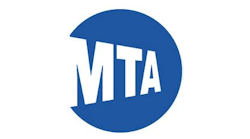Balanced budget through 2027 pulls MTA back from fiscal cliff
The Metropolitan Transportation Authority’s (MTA) preliminary five-year financial plan shows a balanced budget, effectively dousing the flames of a financial crisis that had been stoked with its previous proposed budget for 2023 that projected a $600 million deficit.
The expected deficits in the financial plan were erased by several items included in the New York State Budget for Fiscal Year (FY) 2024, including an increase in the Payroll Mobility Tax, additional funding for paratransit services from New York City and one-time state aid. The state budget also tasked the authority with achieving $400 million in annual operating efficiencies to reduce expenses. MTA is targeting $500 million in annual savings, which begins this year with $250 million and adding $100 million in efficiencies in 2025.
“[New York] Gov. [Kathy] Hochul and the State Legislature delivered for riders in this year’s budget, providing stability with long-term funding sources at a time when we have seen strong progress in bringing more and more people back to mass transit,” said MTA Chair and CEO Janno Lieber. “With a stable operating budget for the foreseeable future, the MTA will remain focused on providing the best possible service for New Yorkers while also getting to work on transformative capital projects – to make the entire subway system ADA accessible, to transition to a zero-emissions bus fleet and to bring all MTA systems much closer to an industry-standard State of Good Repair.”
MTA ridership is tracking at a midpoint projection, with the authority anticipating 80 percent of riders will have returned to the system by 2027. The ridership projection scenario was developed by consulting firm McKinsey. A proposed 5.5 percent toll increase and four percent fare increase are expected to take effect by the end of August after the proposal is approved by the MTA Board. The increase is expected to generate $117 million in 2023. There is an additional four percent increase in tolls and fares in 2025 and 2027 within the five-year financial plan.
“The best way to avoid a fiscal cliff is to have a balanced budget solution, with new dedicated revenue streams, find areas to be more efficient and continue to bring riders back,” said MTA Chief Financial Officer Kevin Willens. “The revenue generated from new dedicated taxes, a modest increase in tolls and fares and identifying operational efficiencies will keep the budget balanced through 2027. To stay on track, we must continue to deliver great service and build ridership.”

Mischa Wanek-Libman | Group Editorial Director
Mischa Wanek-Libman is director of communications with Transdev North America. She has more than 20 years of experience working in the transportation industry covering construction projects, engineering challenges, transit and rail operations and best practices.
Wanek-Libman has held top editorial positions at freight rail and public transportation business-to-business publications including as editor-in-chief and editorial director of Mass Transit from 2018-2024. She has been recognized for editorial excellence through her individual work, as well as for collaborative content.
She is an active member of the American Public Transportation Association's Marketing and Communications Committee and served 14 years as a Board Observer on the National Railroad Construction and Maintenance Association (NRC) Board of Directors.
She is a graduate of Drake University in Des Moines, Iowa, where she earned a Bachelor of Arts degree in Journalism and Mass Communication.






